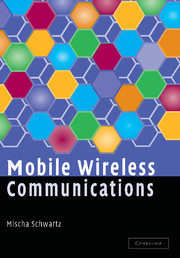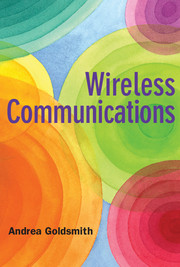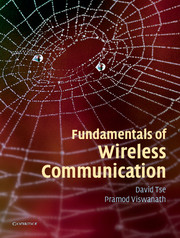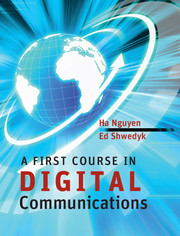Mobile Wireless Communications
Wireless communication has become a ubiquitous part of modern life, from global cellular telephone systems to local and even personal-area networks. This 2004 book provides a tutorial introduction to digital mobile wireless networks, illustrating theoretical underpinnings with a wide range of real-world examples. The book begins with a review of propagation phenomena, and goes on to examine channel allocation, modulation techniques, multiple access schemes, and coding techniques. GSM and IS-95 systems are reviewed and 2.5G and 3G packet-switched systems are discussed in detail. Performance analysis and accessing and scheduling techniques are covered, and the book closes with a chapter on wireless LANs and personal-area networks. Many worked examples and homework exercises are provided and a solutions manual is available for instructors. The book is an ideal text for electrical engineering and computer science students taking courses in wireless communications. It will also be an invaluable reference for practising engineers.
- Provides an accessible introduction to the theory and practice of modern wireless networks
- Contains many worked examples and homework exercises
- Solutions manual available for instructors
Reviews & endorsements
'I rarely award books top marks, but there is no doubt this one fully deserves it. If you are looking for one book to both cover wireless fundamentals and give you details of the key wireless systems in use today, I'd strongly recommend this one.' William Webb, IEE Communications Engineer
'This is a valuable resource of knowledge, and should not be squandered or allowed to die out for reasons of commerce.' International Journal of Electronics
'This book is a highly readable and step-by-step introduction to wireless communications … I will recommend it to my MSc students. The book is, however, also suitable for senior undergraduates and independent readers.' The Times Higher Education Supplement
'… an ideal text for electrical engineering and computer science students taking courses in wireless communications, as well as an invaluable reference for practicing engineers.' Iasi Polytechnic Magazine
Product details
December 2004Hardback
9780521843478
470 pages
244 × 170 × 25 mm
0.94kg
Available
Table of Contents
- 1. Introduction and overview
- 2. Characteristics of the mobile radio environment - propagation phenomena
- 3. Cellular concept and channel allocation
- 4. Dynamic channel allocation and power control
- 5. Modulation techniques
- 6. Multiple access techniques: FDMA, TDMA, CDMA - system capacity comparisons
- 7. Coding for error detection and correction
- 8. Second-generation, digital, wireless systems
- 9. Performance analysis: admission control and handoffs
- 10. 2.5G/3G mobile wireless systems: packet-switched data
- 11. Access and scheduling techniques in cellular systems
- 12. Wireless LANs and personal-area networks.





